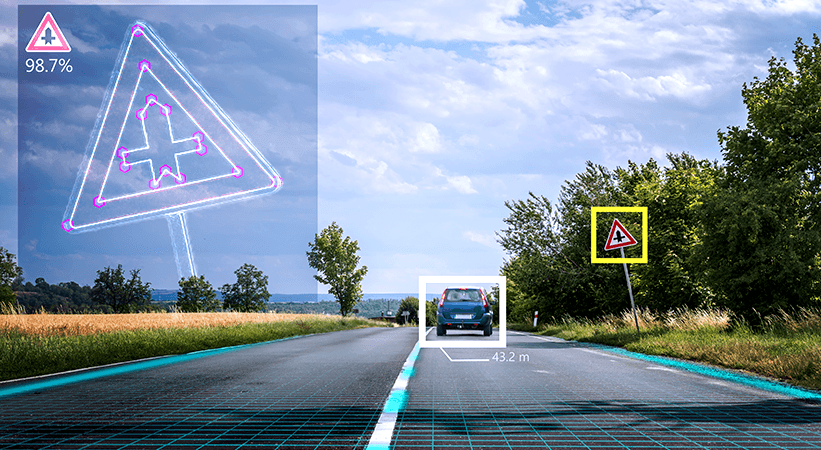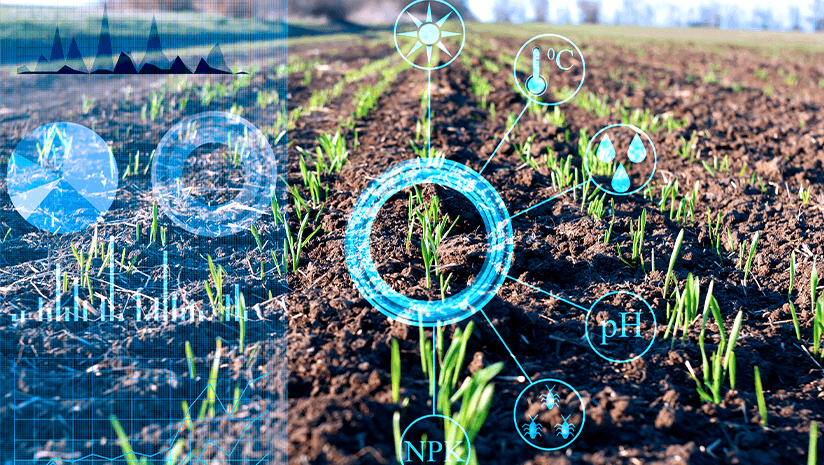Everything You Need to Know About Computer Vision
With its recent surge in popularity, computer vision (CV) has become one of the fastest-growing fields of artificial intelligence (AI). The intended purpose of computer vision technology is to mimic the complexity of the human vision system, which includes eyes, receptors, and the visual cortex. This intricate system, when duplicated, gives machines the ability to recognize and process images and videos—much like the human brain does, but faster, and more accurate.
Computer Vision Applications in Use Today
Computer vision has many applications already in use today, several with significant social implications. For example, CV uses image recognition to enable self-driving cars to recognize pedestrians, road signs, and other important features in their path. Medical professionals also leverage CV to support diagnoses from CT scans, radiology images, and other imaging tools. Many e-commerce organizations rely on CV for driving ad placement and identifying unsafe brand content.
Whatever the use case, enterprise companies are investing in computer vision to make predictions and decisions quickly and with high confidence. Many companies rely solely on computer vision for their AI solutions, an action made possible due to the large amounts of image data now available for machine processing.
Computer Vision: Deep Learning Vs. Machine Learning
Computer vision typically leverages either classic machine learning (ML) techniques or deep learning methods. With a standard ML approach, developers program small applications to identify patterns in images. A statistical learning algorithm then classifies the images and detects objects within them. This is a vast improvement over the original method, where developers had to manually code numerous unique rules into computer vision applications.
Deep learning for computer vision offers a very different approach to ML. It’s based on neural networks, which solve problems by identifying patterns in provided examples. It requires an extensive amount of high-quality training data and appropriate adjustments of variables, such as the number of neural networks used. With enough examples, the neural network will learn to identify the desired object (for example, a cancerous growth in a radiology image) without needing additional direction. Many computer vision applications use deep learning techniques, as these tend to be easier to deploy than other methods.
Computer Vision Approaches
Computer vision uses ML to process and interpret images. To do so successfully, the CV model must be trained using a vast number of images. But what are the primary considerations when training a CV model?
You must use high-quality image data when training your model. Data that’s high-quality is complete, clean, and accurately-labeled. Depending on what you’re asking your model to do, the machine may use one or a combination of the following four main approaches to interpreting images:
- Recognition – The computer identifies and interprets objects in images. For example, identifying a stop sign at a four-way stop in a photo or video collected by a self-driving car
- Reconstruction – Using visual sensory data, the computer detects various types of motions and recognizes multiple perspectives of an image. This approach is commonly used in mapping and environmental models, as well as in gaming.
- Registration – The computer transforms different sets of data into one coordinate system; for example, information gained from two images acquired in the clinical track of events is usually complementary, so the first step to integrating them is to spatially align the modalities through registration, before fusing the two data sources.
- Reorganizing – This final approach is often interpreted as the grouping and breakdown of categories in a visual image. For example, using computer vision, a machine can recognize a black hockey puck on the ice, but a player’s ice skate may interfere with the registration of that puck. Using the reorganizing method, the computer vision system can use prelabeled data and memory to categorize the hockey puck vs. the player’s skate.
The Future of Computer Vision

Computer vision has an incredible range of uses across all major industries and is quickly becoming commonplace in our lives. But it is also one of the hardest problems to solve in machine learning. Organizations are already developing the fundamental framework to support the usage of CV in daily operations, with a continuous data pipeline to make sure their models have the right amount of training data to enable them to perform and improve over time. The result will enable computers to handle more routine tasks normally done by humans at a faster and more productive pace, driving revenue, and reducing costs.
Computer vision applications will continue to advance, building on already powerful capabilities, as they continue to get more and more traction in business applications. With the availability of data and computer processing power on the rise, this space is certainly one to watch.
Insight From An Appen Computer Vision Expert – Kuo-Chin Lien
At Appen, we rely on our team of experts to help you build cutting-edge models utilizing computer vision that enables a quality customer experience. Kuo-Chin Lien, Head of Computer Vision at Appen, leads the team to ensure Appen customer CV models are executed successfully. Kuo-Chin’s top three insights on computer vision include:
- Define success criteria before one can succeed. In computer vision projects, this usually means clear mathematical metrics. It can be IoU in an object detection project; it can be MOTA in an object tracking project; it can also be some more customized metric that has never been reported in literature, especially when the project is meant to enable some novel applications. With these metrics, machine learning scientists, product managers, and data annotation vendors can have a clear common goal to optimize the data and process.
- Visualize details in every possible granularity. In addition to watching key metrics, scientists constantly need to trace down to experiments and see why things may go wrong with some specific parameters. Visualization is particularly powerful here for computer vision projects, as bad parameters often directly lead to some visual artifacts. At Appen, we find development can be much easier by leveraging all levels of visualization, from job level to pixel level.
- Ensembles. When resource permits, one should consider integrating inference results from (1) both human and machine, that are best from (2) multiple human and multiple algorithms, and when application permits, these judgments are best performed on (3) multiple sensor signals. A representative scenario is autonomous driving companies work on safety-critical perception algorithms and their data vendors need to provide very accurate ground truth annotation. The redundancy in the aforementioned labeling procedure reduces uncertainty and consecutively the risks in autonomous driving applications.
What We Can Do For You
We provide data annotation and collection services to improve machine learning at scale. As a global leader in our field, machine learning and AI teams benefit from our capability to quickly deliver large volumes of high-quality image and video data specific to your computer vision program needs. Learn more about our annotation capabilities here.











